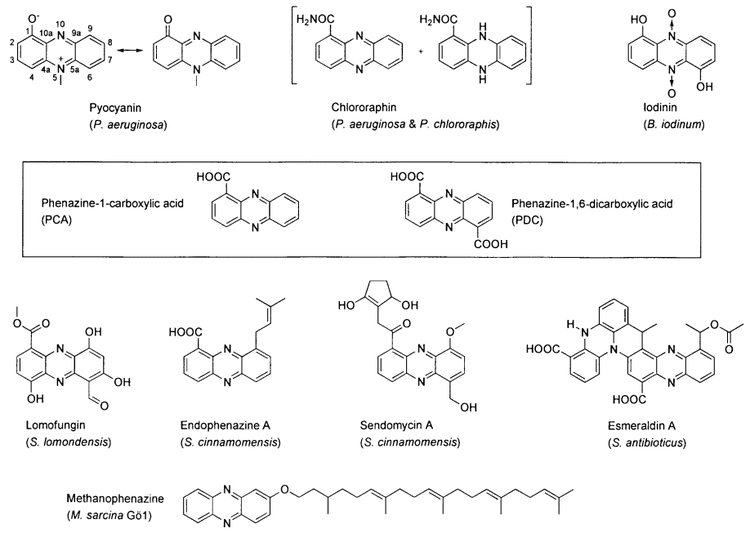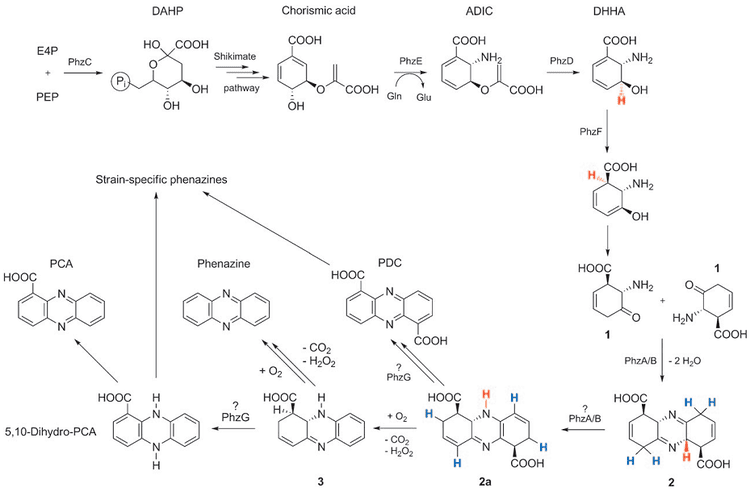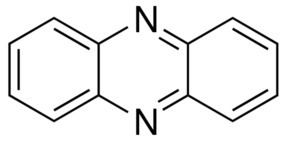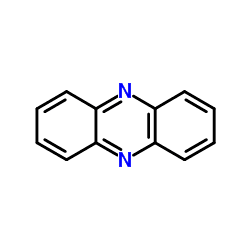Formula C12H8N2 Density 1.25 g/cm³ | Molar mass 180.21 g/mol Boiling point 357.2 °C | |
 | ||
Appearance yellow to brown crystalline powder | ||
Elucidation of enzymatic mechanism of phenazine biosynthetic protein phzf using qm mm and md
Phenazine (C12H8N2 or C6H4N2C6H4), also called azophenylene, dibenzo-p-diazine, dibenzopyrazine, and acridizine, is a dibenzo annulated pyrazine and the parent substance of many dyestuffs, such as the toluylene red, indulines and safranines (and the closely related eurhodines). Phenazine crystallizes in yellow needles, which are only sparingly soluble in alcohol. Sulfuric acid dissolves it, forming a deep-red solution.
Contents
- Elucidation of enzymatic mechanism of phenazine biosynthetic protein phzf using qm mm and md
- Phenazine meaning
- Synthesis
- Derivatives
- Diaminophenazine
- Natural products
- Biosynthesis
- References

Phenazine meaning
Synthesis
Classically phenazine are prepared by the reaction of nitrobenzene and aniline in the Wohl-Aue reaction). Other methods include:

Derivatives

Diaminophenazine

The symmetrical diaminophenazine is the parent substance of the important dyestuff toluylene red or dimethyldiaminotoluphenazine. It is obtained by the oxidation of orthophenylene diamine with ferric chloride; when a mixture of para-aminodimethylaniline and meta-toluylenediamine is oxidized in the cold, toluylene blue, an indamine, being formed as an intermediate product and passing into the red when boiled; and also by the oxidation of dimethylparaphenylene diatnine with metatoluylene diamine. It crystallizes in orange-red needles and its alcoholic solution fluoresces strongly. It dyes silk and mordanted cotton a fine scarlet. It is known commercially as neutral red. For the phenazonium salts, see safranine. Phenazone is an isomer of phenazine, to which it bears the same relation that phenanthrene bears to anthracene.
Natural products
Many phenazine compounds are found in nature and are produced by bacteria such as Pseudomonas spp., Streptomyces spp., and Pantoea agglomerans. These phenazine natural products have been implicated in the virulence and competitive fitness of producing organisms. For example, the phenazine pyocyanin produced by Pseudomonas aeruginosa contributes to its ability to colonise the lungs of cystic fibrosis patients. Similarly, phenazine-1-carboxylic acid, produced by a number of Pseudomonas, increases survival in soil environments and has been shown to be essential for the biological control activity of certain strains.
Biosynthesis
Phenazine biosynthesis branches off the shikimic acid pathway at a point subsequent to chorismic acid. Two molecules of this chorismate-derived intermediate are then brought together in a diagonally-symmetrical fashion to form the basic phenazine scaffold. Sequential modifications then lead to a variety of phenazine with differing biological activities.
